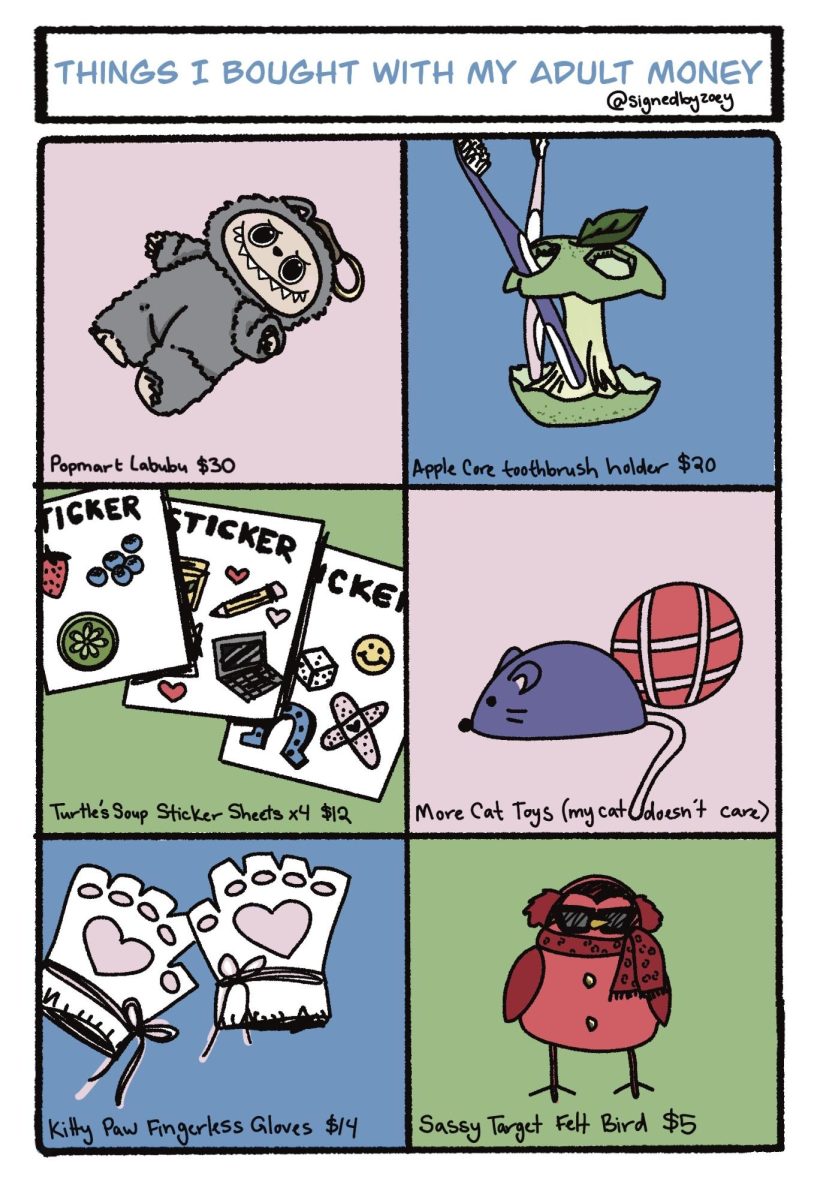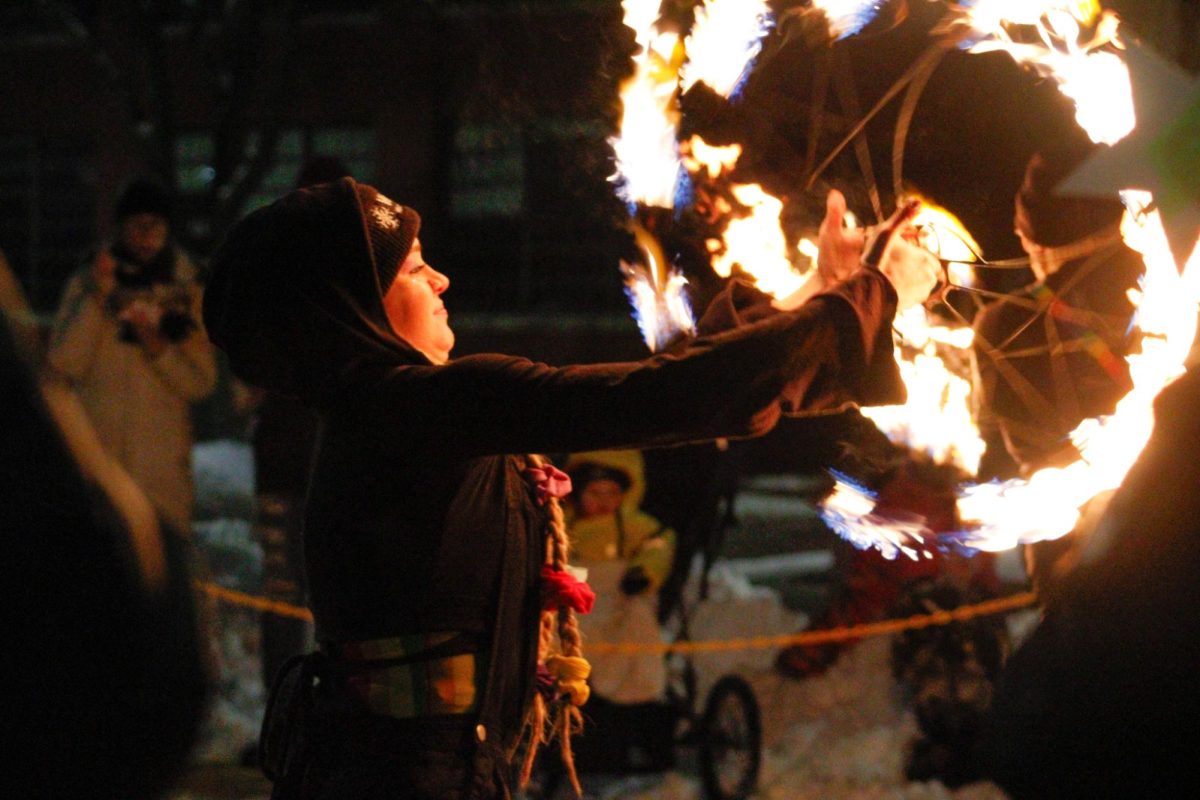Review: Spielberg’s “The Fabelmans” offers sincere look at the director’s own life
Feb 1, 2023
Legendary director Steven Spielberg’s autobiographical coming-of-age story valuable insight into his upbringing as well as his love for film.
Spielberg’s latest film, “The Fabelmans,” a refreshing story told with personal care, and this late-career entry is his most personal film yet. While Spielberg has always included pieces of himself in his films, “The Fabelmans” offers his most sincere assessment of his own character and rise to fame.
The film is ostensibly a period piece, taking place from the early 1950s to mid-1960s, and is full of cultural references, great set-pieces, pastel-colored cars and everything else you might expect from America’s postwar heyday.
The story is based on Speilberg’s own life, as his stand-in, Sammy Fabelman struggles to find his identity in the shadow of a powerful mother figure and the silent, studied calculation of his computer engineer father.
The first leg of the film is short but impactful. A young Sammy (played by Mateo Zoryan Francis-DeFord), is taken to the movies for the first time to see Cecil B. DeMille’s “The Greatest Show on Earth.” Enamored by the action sequence in which a train eviscerates a convertible parked on the tracks, Sammy begins to focus on recreating the scene in his own real life. When his father, Burt, played by Paul Dano with prudent reserve, buys him an expensive train set, he stages the same scene.
His mother, Mitzi, played to a chaotic boiling point by Michelle Williams, does her best to protect her son’s interests despite her emotional issues. Seeing his need for what she believes to be destruction, she offers the use of their home video camera and informs him that recreating it once means it will live forever on film. This, of course, strikes a chord with Sammy, as a montage plays out of him and his sisters staging their own movies, using toilet paper to dress as mummies and using ketchup as stage blood. The next time we see him, he is in his teenage years, now being played by Gabriel LaBelle.
The cast is extraordinary, as is par for the course on any Spielberg film. Seth Rogen plays Burt’s best friend, Bennie, who has a strange connection with Mitzi. Rogen’s character is a perennially single man who is outgoing and a foil to Burt. The boisterous “Uncle Bennie” is frequently present in the home and can often be seen talking with Mitzi.
Sammy’s filmmaking prowess grows, and his entrance into photography competitions for his Boy Scout troop allow him to stand out significantly, swelling his parents and Bennie with pride for the creative youth. LaBelle’s performance as Sammy offers the most candid portrait of the director yet, and the young actor does a phenomenal job of making the audience feel the highs and lows of his childhood.
LaBelle worked closely with the filmmaker to look and sound just like him. In one particularly memorable scene, Sammy makes a war epic with his schoolmates, and the result is a recreation of Spielberg’s own 1961 short war film, “The Escape to Nowhere.” Naturally, numerous meta references are at play here, foreshadowing the director’s success with “Saving Private Ryan” and “Band of Brothers.”
The three-act script allows for numerous changes in setting, surrounding Sammy with entertaining new characters as he faces the perils of growing up. Young Sammy starts in New Jersey, a melting pot in which he feels comfortable. When his father, Burt, gets a new job with General Electric, the family moves to Phoenix, Arizona. Mitzi insists they bring Bennie along, and although it seems harmless, the viewer is starting to hone in on the double cross that is unfolding.
Sammy begins to document everything, and in traditional filmmaking fashion, asks his father to back the car out of the driveway again so that he may film the crossing of his family onto this new threshold. Phoenix ends up being where Sammy fits in the best, and we are treated to several of his productions.
After Sammy sees “The Man Who Shot Liberty Valance” starring John Wayne, Sammy resolves to shoot his own Western, employing his fellow students as actors and extras.
Where Sammy really thrives, however, is in his documentaries. The first project of note is his recollection of a camping trip his family takes with Uncle Bennie. One night, in the dark and dense woods, his mother begins dancing sensually in the foglights of their sedan and Bennie insists he film it while Burt looks on, contemplating the whims of his mercurial wife.
Later, when Mitzi’s mother dies and she spirals into a fit of depression and isolation, the kind and thoughtful Burt purchases Sammy a much sought-after editing set, but insists he use it to piece together the family’s campsite memories as a gift to his mother.
The film, however, when played back for editing, yields a disturbing revelation to the young Sammy, as it catches Mitzi and Bennie in intimate moments.
This breaks Sammy’s heart and two especially moving scenes follow. The first, after weeks of disrespect towards the two lovers, erupts in an act of physical violence by Mitzi against young Sammy. To explain himself, he shuts her in his closet and turns on the projector. She bursts forth from the closet with terrible tears, and Sammy learns a thing or two about growing up. In that moment, though revenge was on his mind, his mother’s sadness nullifies his rage and he finds himself instinctually comforting her, holding Mitzi in his arms like she is the child who needs it.
The second scene, the last before the family moves to California, features Seth Rogen at his best. Sammy is about to sell his camera at a local shop, when he sees his former favorite uncle, Bennie. Bennie is being passed an expensive new video camera, the same that Sammy joyously borrowed for a recent film. When Sammy inquired about the reason for this purchase, Bennie awkwardly pushes it towards him, causing Sammy to run away to the street where Bennie stops and confronts him.
Sammy is again forced to embrace the complicated nature of right and wrong and accept that his idols are simply humans as well. The adults in his life have flaws, just like him. No one is above it, and the realization shocks him deeply.
Though Sammy is our protagonist, the drama in the film centers around Mitzi. She is a talented piano player and has given up any goals of personal achievement in order to be a wife to Burt and a father to Sammy and his sisters. Burt is portrayed as a genius who has made significant strides in the world of computing, and soon his success rewards him in sunny California.
However, Sammy finds California less than desirable. In addition to the perils of making new friends, he finds that all the candidates for such a role are tall, athletic, impeccably suntanned and anything but Jewish.
A teen drama plays out before us, as Sammy fights to find himself in the Golden State. Two boys, a jock named Logan, played with heart by Sam Rechner, and an outcast bully named Chad, who is played by Robin Bartlett, both hone in on the new kid and express antisemitic and childish attitudes while making life miserable for him.
Sammy strikes back by telling Logan’s girlfriend, Claudia, played by Isabelle Kusman, that he has seen Logan cheating on her in the stairwell. The following beating from the two young men is brutal but his plight doesn’t go unnoticed by Claudia, who finds him endearing.
As a sort of apology, she sets him up with Monica, a young Christian girl played by Chloe East with great comedic effect. Sammy has stopped filming for now, but his new focus takes up all of his time.
Their romance blossoms and Monica’s wealthy family offers Sammy support in his filmmaking endeavors. Soon, the Fabelman family is brought back into the foreground, and after moving to a beautiful home in the hills, the fruit of Burt’s lifelong labor, the family finally falls apart. In a somber and realistic scene, Burt and Mitzi are forced to finally be honest with their children and explain Bennie’s complicated role in their story. Though Mitzi loves Burt, she loves Bennie in a different way and decides to move back to Phoenix to find her own happiness.
The destruction of his nuclear family has an understandably earth-shattering impact on Sammy, who is set to go to college next year.
Having just found his footing in California, he has since returned to filming and made a documentary about senior ditch day, 1964. The film is set to premiere at prom, but Sammy makes one wrong move that ruins the night for him. While slow-dancing to “Walk on By”, he tells Monica he loves her, but cites the reason for this revelation as him not wanting to lose anyone else in his life. Monica responds with annoyance and says that they were always meant to leave each other. Sammy plays his film, which showcases Logan as a shirtless, golden god and endears both boys to the masses. Sammy has finally realized the allure of star power and used it to deft and efficient effect in his film, which alternatively shows Chad in a deprecating light.
A year later, Sammy finds himself in Los Angeles, having received an offer from CBS to work on “Hogan’s Heroes.” In the same building that hosts the production for that show, Sammy finally encounters a new role model, legendary director John Ford, played by renowned auteur David Lynch.
This meta vignette is the cherry on top of the whole movie, and Lynch’s offbeat presence in this scene mirrors Ford’s nature while commenting on his own strange place in film history.
In an interaction that actually occurred between a young Spielberg and a Ford towards the end of his career, the director bestows knowledge upon him that he promises to be both simple and beneficial. “When the horizon is at the top of the screen, it’s interesting. When it’s at the bottom, it’s interesting. When it’s in the middle, it’s s**t.”
Drunk on his newfound place in Hollywood and the culmination of his dreams, Sammy skips out the door to the studio lot while the camera shows the horizon of the shot squarely in the middle. The film then breaks the fourth wall and rights the shot so that the horizon is at the top of the screen, per John Ford’s undying knowledge of cinematic greatness.
Spielberg’s latest is mostly about growing pains and forgiveness, but also provides a specific mythology into the rise of the renown director. Though it is short on actual historical events from the time (the Vietnam war, the assassination of John F. Kennedy and the civil rights movement), the film benefits from its warm depiction of the simpler times of childhood.
A bildungsroman with heartfelt implications amongst an intoxicating fondness for post-war America, Spielberg’s “Fabelmans” offers a painfully sincere seance of simpler times while also anchoring the audience into the complicated feelings of growing up and realizing your heroes have troubles too.

























